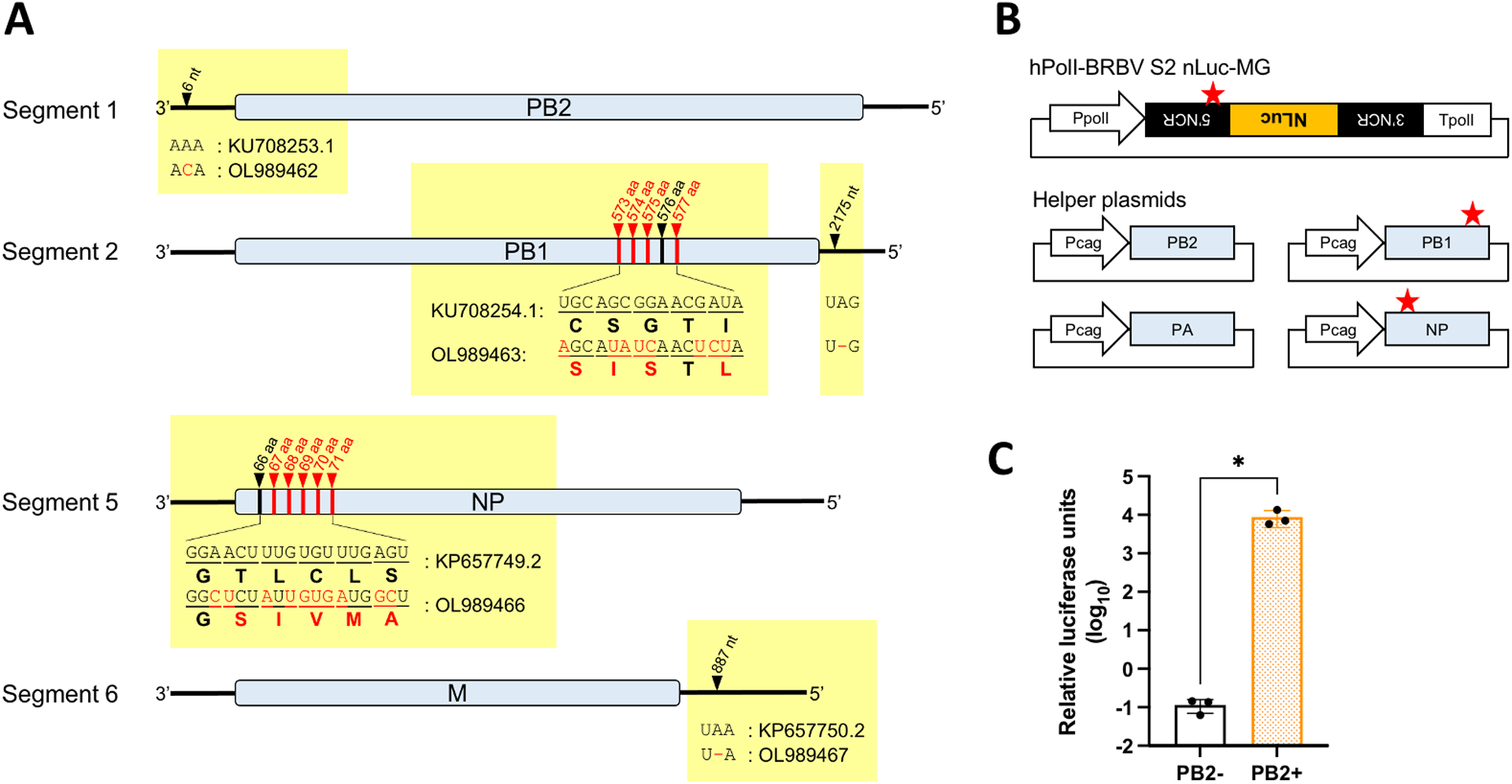Fig. 1:

Luminescence-based BRBV MG system in HEK293 cells. A) Nucleotide and amino acid differences between previously Genbank-deposited BRBV sequences (segment 1: KU708253.1, segment 2: KU708254.1, segment 5: KP657749.2, segment 6: KP657750.2) and our verified sequences (segment 1: OL989462, segment 2: OL989463, segment 5: OL989466, segment 6: OL989467). Differences are shown in red. B) Schematics of the segment 2-based BRBV MG plasmid encoding nanoluciferase (NLuc) gene and helper plasmids encoding PB2, PB1, PA, and NP. The sequence differences in the 5’ non-coding region (5’ NCR) of segment 2, as well as the PB1 and NP ORFs, found in our verified sequences are indicated by red stars. PpolI: human RNA polymerase I promoter, TpolI: human RNA polymerase I terminator, Pcag: cytomegalovirus enhancer fused to the chicken beta-actin promoter. C) BRBV MG activity shown by relative luciferase units (NLuc activity normalized by firefly luciferase activity) with or without supplementation of PB2 helper plasmid at 48 hours post-transfection. HEK293 cells were seeded in 12-well plates and transfected with a MG-NLuc plasmid (0.5 μg) together with helper plasmids (0.5 μg each) and a firefly luciferase-expressing plasmid (10 ng). All data are representative of the average of three independent experiments. *: p < 0.05.
